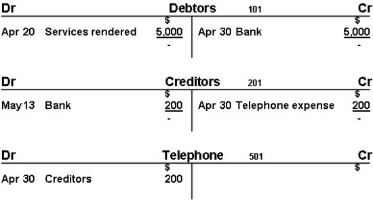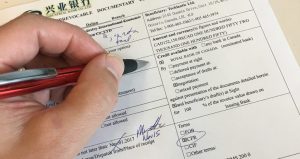
This process involves meticulously reviewing each transaction entry in QuickBooks and cross-referencing it with the corresponding entry in the bank statement. By performing this comparison, discrepancies such as missing transactions, duplicate entries, or incorrect amounts can be readily identified. This not only helps in maintaining accurate financial records but also serves as a crucial reconciliation step to ensure that the company’s books reflect the true financial position. Reconciling a bank statement is an important step to ensuring the accuracy of your financial data. To reconcile bank statements, carefully match transactions on the bank statement to the transactions in your accounting records. With QuickBooks, you can easily reconcile bank accounts to ensure that the dollars you record are consistent with the dollars reported by the bank.
Choose the account you wish to reconcile
Once you verify that you are on Business View, click on Switch to Accountant view to update the appearance of your sidebar menu. In a few seconds, you should see the same left-side menu bar illustrated in this tutorial. I’ll share details to get back and see the beginning and ending balance of reconciliation inside QuickBooks Online (QBO). QuickBooks Online syncs with more than 750 different third-party business apps, ranging from point-of-sale apps to payment acceptance tools and beyond. Naturally, QuickBooks Online syncs with other QuickBooks products as well, including QuickBooks Time (formerly TimeTrex), TurboTax and QuickBooks Online Payroll. The “History by account” button is visible on the upper righthand corner here.
Account Information
Once the difference is $0, you’ve completed the reconciliation process. If the difference isn’t CA $0.00, or you can’t find a transaction that should be in QuickBooks, don’t worry. To get started, navigate to the Reconcile page in QuickBooks Online (Take me there). You can do this by clicking on the Gear icon in the upper-right corner of the screen and selecting Reconcile from the drop-down menu. Once you’re done, you should see a difference of $0, which means your books are balanced. For example, if the payee is wrong, you can click on the transaction to expand the view and then select Edit.
Reconciling accounts is easier using QuickBooks Online
By marking transactions as cleared, it becomes easier to track which ones have been verified by the bank, minimizing the risk of overlooking any discrepancies. Entering the ending balance in QuickBooks Online is a crucial step in the reconciliation process, ensuring that the financial records align with the closing balance of the bank statement. From accessing the reconcile tool to marking transactions as cleared, we’ve got you https://www.personal-accounting.org/common-inventory-dividend-distributable/ covered. We’ll delve into reconciling previous months, rereconciliation, and marking transactions as reconciled in QuickBooks Online. If you’re ready to streamline your reconciliation process and gain a deeper understanding of how to reconcile in QuickBooks, read on to become a reconciliation pro. In QuickBooks Online, you can choose to reconcile any of your connected accounts, as well as bank accounts that are not connected.
Reconcile an account in QuickBooks Desktop
By regularly reconciling your accounts with your bank and credit card statements, you ensure the integrity of your financial data, enabling informed decision-making for your business. If you would like to streamline your reconciliation process in QuickBooks, Synder is the answer. Synder is a comprehensive financial management software that specializes in automating accounting processes for businesses, particularly defining take-home pay those operating in ecommerce and using online payment platforms. Linking your bank and credit card accounts to online banking allows for the automatic downloading of transactions and entry of the opening balance into QuickBooks Online. The next step is to identify any discrepancies between these two sets of records, which could be due to errors, omitted entries, or timing differences in recognizing transactions.
Additional QuickBooks accounting and payroll products
It also provides an important verification that there is no fraud or unsavoury activities going on. If your difference is, for example, $21.50, then look for a transaction for this amount on either your bank statement or the QuickBooks list https://www.business-accounting.net/ of transactions. You can click on the amount column in the QuickBooks reconciliation screen to sort the transaction by amount. Triple-check the statement balance, service charge, and interest income you entered from the bank statement.

After completing the previous step, QuickBooks will display a screen with a summary of the reconciliation in the top half and detailed transactions in the bottom half. When you’re done reviewing your statement, you’ll know everything made it into QuickBooks. Unlock the power of merchant services for your business with our comprehensive guide. Frequent reconciliation is important to ensure your QuickBooks accounts remain accurate.

Implement the steps outlined in this guide and prioritize regular reconciliation in your financial routine. If you reconciled a transaction by mistake, here’s how to unreconcile it. Once you have your monthly bank or credit card statement, you can start reconciling.
Upon confirming the reconciliation, the process concludes, showcasing the financial harmony between the records and the bank statement. This process is crucial in achieving reconciliation accuracy, as it involves reviewing and making necessary modifications to account for any discrepancies. By adjusting transactions, users can ensure that their financial data aligns with the actual bank activity, minimizing errors and enhancing the overall reliability of the financial statements. After entering the statement date and ending balance, you’ll see a list of transactions that need to be reviewed and matched. Go through each transaction and ensure that it matches the transactions on your bank or credit card statement.
Always look to see if something cleared your account that just doesn’t belong there. QuickBooks has an accounting tool specifically for freelancers called QuickBooks Online Self-Employed, which starts at $15 a month. QuickBooks Self-Employed tackles basic freelance bookkeeping features like expense tracking, receipt uploading, tax categorizing, quarterly tax estimating and mileage tracking. QuickBooks Online Advanced is more than double the cost of QuickBooks Online Plus, which can make it an expensive jump for midsize businesses seeking to scale up.
QuickBooks Online’s two higher-tier plans include basic inventory management. While QuickBooks’ inventory management software isn’t the most advanced inventory option out there, it’s perfectly functional. Plus, Quickbooks’ thorough integration library ensures users can find inventory tracking software that both meets their needs and integrates with their accounting software. As an accounting program, QuickBooks Online helps you track your finances while giving you clear insights that can guide your most crucial business decisions. To that end, each QuickBooks Online plan includes cash flow forecasting. From the dashboard, a cash flow formatting snapshot shows you both where your business stands now and where it likely will stand financially several months to a year down the road.
The QuickBooks reconciliation screen contains a summary of cleared transactions at the top and a detailed list of transactions at the bottom. It’s easy to assume that large financial institutions don’t make mistakes, but they do. A few years back, I had checks belonging to someone else clearing in my account for three months in a row. If I hadn’t looked at the checks that were clearing to match them with my transactions, chances are I never would have spotted them.
- In 2012, she started Pocket Protector Bookkeeping, a virtual bookkeeping and managerial accounting service for small businesses.
- Sometimes, this ease of use can cause you to make an error that results in having to undo the reconciliation.
- This process is crucial for ensuring the financial integrity of a business.
- You enter the balance of your real-life bank account for whatever day you choose.
- Once connected, all bills in QuickBooks Online will sync in real-time with Wise.
Maintaining accurate transaction records is vital for financial reporting and decision-making processes within organizations. Regular reviews help in detecting potential errors or fraudulent activities, thereby safeguarding the financial integrity of the business. It also streamlines the reconciliation process, providing a clear and up-to-date financial overview for informed decision-making.
There are a few reasons your QuickBooks data may not match your account statements, including bank service charges, checks that haven’t cleared, and transactions that haven’t been entered in QuickBooks yet. Be careful not to reconcile transactions that are not yet cleared or present on your bank statement. Utilize the Items you’ve marked cleared section to compare the summary totals with those on your bank statement. If you need to edit or get more details on a transaction, select it for further action. To modify any information entered in the previous step, use the Modify option. Finally, after identifying and resolving these discrepancies, adjustments are made to the financial statements to reflect the reconciled balance, ensuring accuracy and consistency in the financial records.